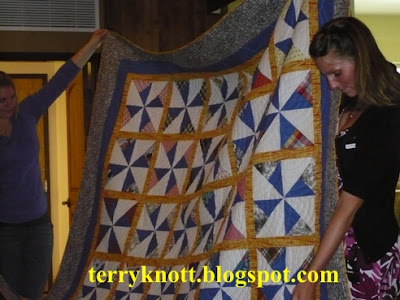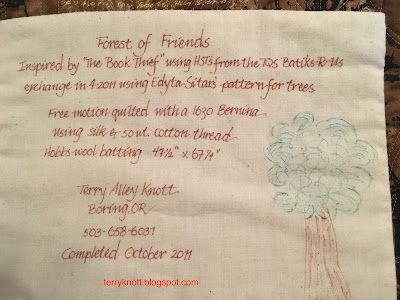 |
| First version |
I knew before I left in March, that our next Thread Tales book club was "The Personal Librarian" by Marie Benedict and Victoria Christopher Murray. I had "reserved" an audio copy through my library at the end of February. Because the queue was so long. . . more than 24 weeks, I realized that I likely wouldn't have the opportunity to read the book much before the reveal.
Fortunately, to participate in our group, one doesn't have to read the book! I did go on line and review summaries of the book and I read book reviews. This lead me to look for information about the woman, Belle da Costa Greene. Reviewing the information, gave me some ideas.
 |
| Thumbnails |
Had I been home, I likely would have made something inspired by Illuminated manuscripts since Greene had a love of those. Knowing that I would be without access to a machine and my stash, I decided to keep my design and palette simple. I want to work more in a modern design to play with that concept.
I also decided that my palette would be black and white and that the project would be about the size of a sheet of paper. I thought about what her life might have looked like had it been a schematic line drawing. I put my pen to paper and made a drawing of straight lines and curves. I added a little shading.
 |
| Inspiration art work |
When I want to make quick sketches, I use ink. When I can't erase, I find that watching the ink flow puts me into a rhythm. Sometimes nothing comes from the exercise and sometimes I like what happens. From what I learned on line about the character I could imagine that these line could represent her life path which needed to alter at times.
While I liked the drawing and while I figured that I could use black bias tape on a neutral background to complete the project, it didn't move me. Gertie, my inner squirrel, couldn't believe that I did more research. She was even more shocked when I selected the fabrics and thread to take with me before I had settled on a design. I knew that I had created a challenge for myself when I limited the scope of the materials!
 |
| Lines of text |
As I contemplated that first drawing, I thought about stitching lines. Then I considered using different stitches for a line or a series of lines. I got out my sketchbook and drew a series of thumbnails. As I drew, I considered lines of type. I thought that the "type" could be stitched in different hand embroidery stitches.These are about two inches square and done in about ten minutes.
 |
| Full figure drawing attempt |
While it was a fun exercise, none was "the one." A variety of embroidery stitches no longer felt like the pattern that I wanted to create.
By this time, I was in London and planning places to visit. One of the places on my list was the Fashion and Textile Museum. We waited until the exhibit "150 Years of the Royal School of Needlework Design" was open to visit. It was a good exhibit of a variety of needlework types through time.
One of the exhibits was from a group that made banners using blue thread on a neutral background. Unfortunately, there was no signage about the maker of this work. This work inspired me to draw some more. It prompted me to view online
photos of Greene.
 |
Drawing of Greene's face inspired
by a Wikipedia photo |
Greene had a secret that she kept for decades. I wondered how keeping a secret for so long would affect someone's personal appearance. I looked a photos of her younger self and photos of her older self. I first thought that I'd draw a woman in a full length dress. I could silhouette that drawing against the background of columns of type. I wasn't excited about that drawing.
Because I wanted the opportunity to change angles, I did the drawing in pencil. I happened upon an older photo of Greene. I was surprised at how thin her lips had become and the pinched look that they had. Her eyes seemed to be looking into the shadows for threats to expose her secret.
I decided to replicate the photo in a drawing. It probably took me about half an hour to complete the drawing. I'm not an artist. I haven't taken a formal drawing class. I was pleased with my effort. My daughter was surprised that I was able to capture Greene's resemblance. Honestly, I was likely more surprised than she was with my results!
From this point, I combined this drawing with the lines of text. I felt like I had a good "pattern" for my project. In my next post on this topic, I'll share my next steps.














































